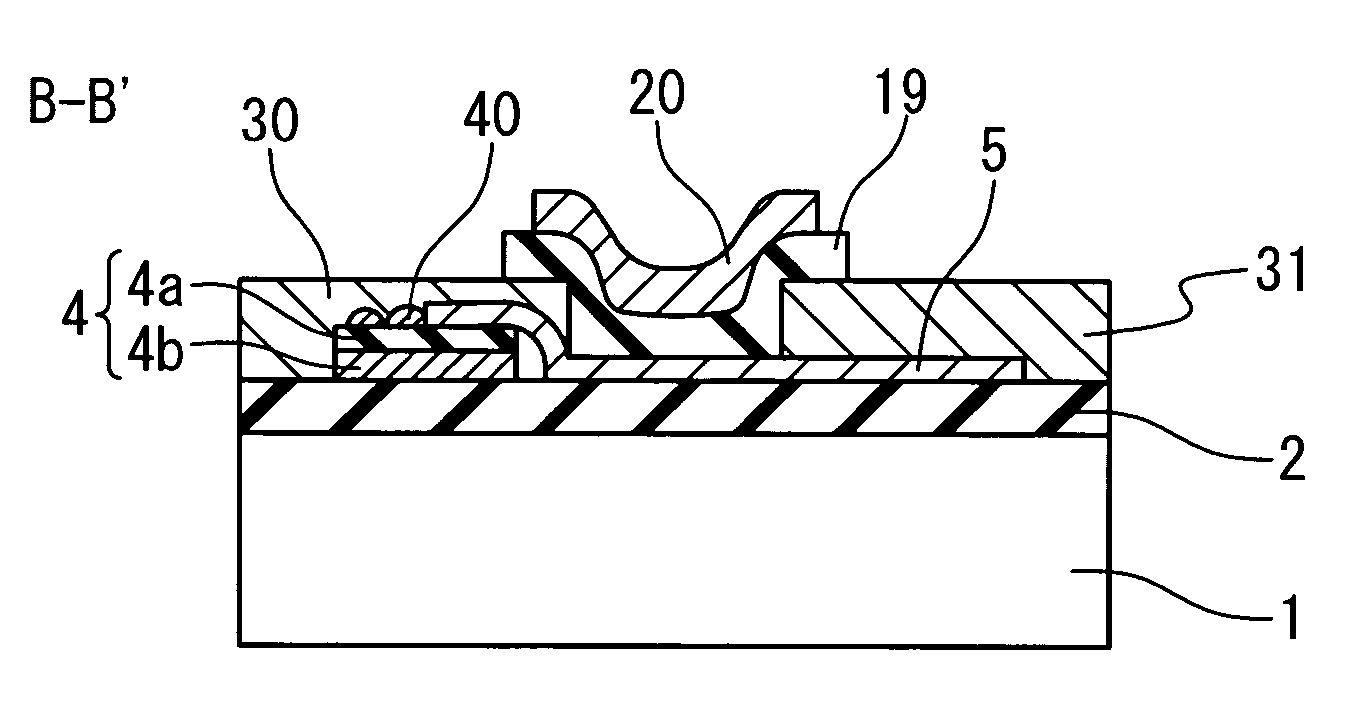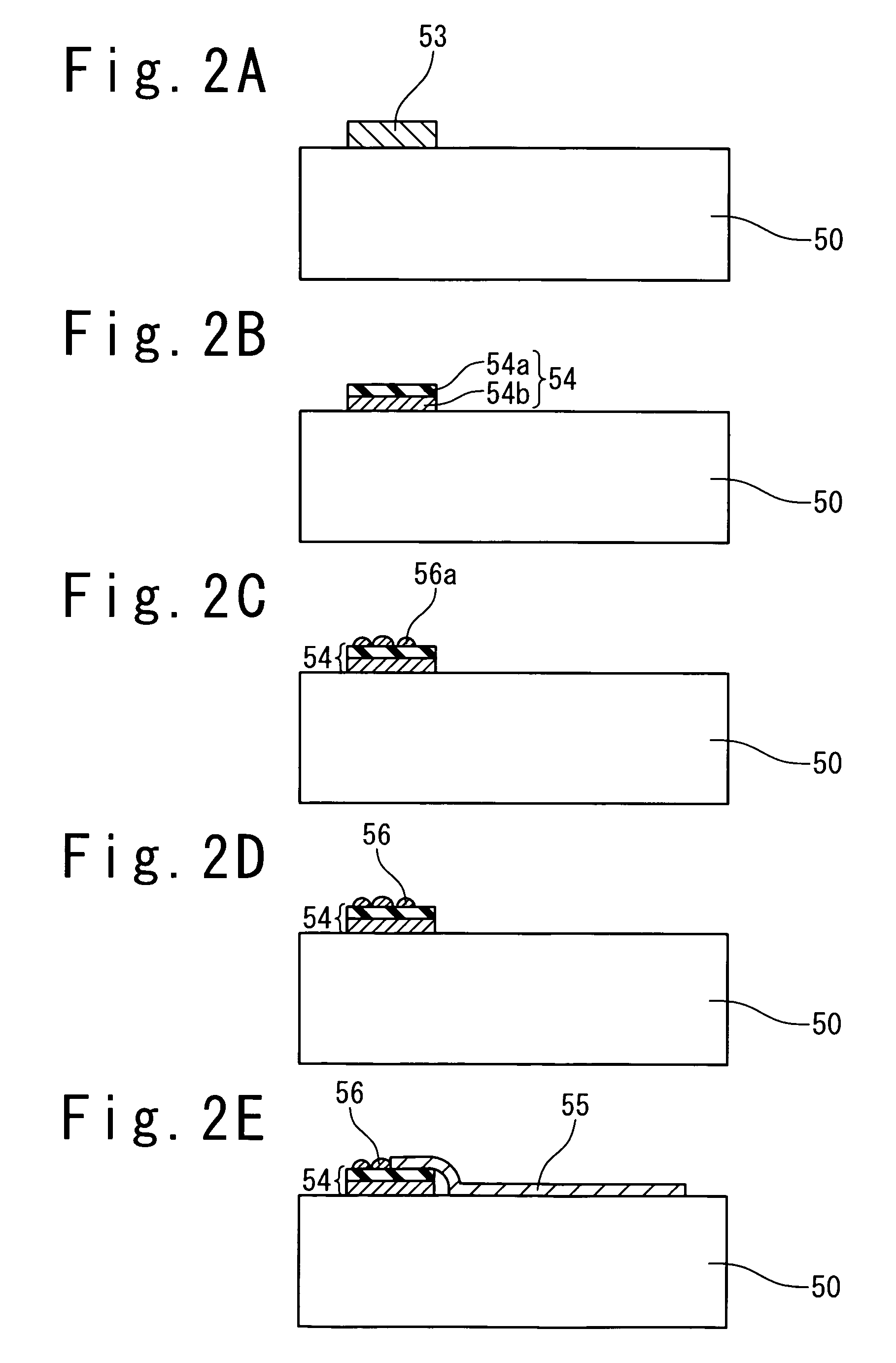Catalyst support substrate, method for growing carbon nanotubes using the same, and the transistor using carbon nanotubes
a technology of carbon nanotubes and support substrates, which is applied in the direction of catalyst activation/preparation, metal/metal-oxide/metal-hydroxide catalysts, etc., can solve the problems of difficult to selectively grow single-wall carbon nanotubes, difficult to deposit catalysts with desirable thicknesses on the portion, and achieve high yield and stably obtain carbon nanotubes. , the effect of high yield
- Summary
- Abstract
- Description
- Claims
- Application Information
AI Technical Summary
Benefits of technology
Problems solved by technology
Method used
Image
Examples
first embodiment
[0109]The first embodiment of the present invention will be described below with reference to the attached drawings.
[0110]This embodiment relates to a method for growing the carbon nanotubes in the present invention (the method for growing the single-wall carbon nanotubes in the direction horizontal to the substrate).
[0111]FIG. 1 is a flowchart showing a film forming process of the method for growing the carbon nanotubes in the first embodiment of the present invention. At first, the metal film composed of a first metal is formed on a substrate (Step S1). After that, the surface is oxidized or hydroxylated to form the catalyst support film including the metal oxide or metal hydroxide (Step S2). Next, the catalyst film including a second metal or the compound of that metal is formed on this catalyst support film surface (Step S3). In succession, reducing gas is brought into contact with the substrate surface including the catalyst film, and a reducing process is carried out (Step S4)...
second embodiment
[0136]The second embodiment of the present invention will be described below with reference to the attached drawings. This embodiment relates to the transistor using the carbon nanotubes in the present invention.
[0137]FIG. 3A and FIG. 3B are views showing one example of the structure of the transistor using the carbon nanotubes in the second embodiment of the present invention. FIG. 3B shows a top view of the transistor. FIG. 3A shows a sectional view along the line AA′ of FIG. 3B. The transistor in this embodiment has the structure that a silicon oxide film 2 is formed on a silicon substrate 1, and a device portion is formed thereon. The device portion includes: a gate electrode composed of an insulating film 19 and a gate metal film 20; a source electrode 30 and a drain electrode 31 which are formed on both sides thereof; and a carbon nanotubes 5 for connecting them. The carbon nanotubes 5 are grown in the direction parallel to the substrate surface from a catalyst film 40 formed ...
first example
[0160]This example shows an example in which the boehmite is used for the material of the catalyst support film, the iron is used for the material of the catalyst film, and the single-wall carbon nanotubes are grown on the substrate. At first, aluminum of 20 nm is deposited on the silicon substrate. After that, this is heated in water boiled at 100° C. for about 30 minutes. As a result, the aluminum is changed into aluminum hydroxide oxide (another name of boehmite). Moreover, it is heated at 600° C. in air for one hour, and converted into the γ alumina, and this is used as the catalyst support film. After that, the iron of 2 nm is deposited on the γ alumina and used as the catalyst.
[0161]This sample is inserted into an electric furnace having a diameter of about 2 inches and heated up to 800° C. in argon atmosphere. At the stage of the arrival at 800° C., the atmosphere gas is switched from the argon to methane (99.999%) and kept for five minutes. After that, it is again switched t...
PUM
| Property | Measurement | Unit |
|---|---|---|
| temperature | aaaaa | aaaaa |
| temperature | aaaaa | aaaaa |
| temperature | aaaaa | aaaaa |
Abstract
Description
Claims
Application Information
 Login to View More
Login to View More - R&D
- Intellectual Property
- Life Sciences
- Materials
- Tech Scout
- Unparalleled Data Quality
- Higher Quality Content
- 60% Fewer Hallucinations
Browse by: Latest US Patents, China's latest patents, Technical Efficacy Thesaurus, Application Domain, Technology Topic, Popular Technical Reports.
© 2025 PatSnap. All rights reserved.Legal|Privacy policy|Modern Slavery Act Transparency Statement|Sitemap|About US| Contact US: help@patsnap.com



